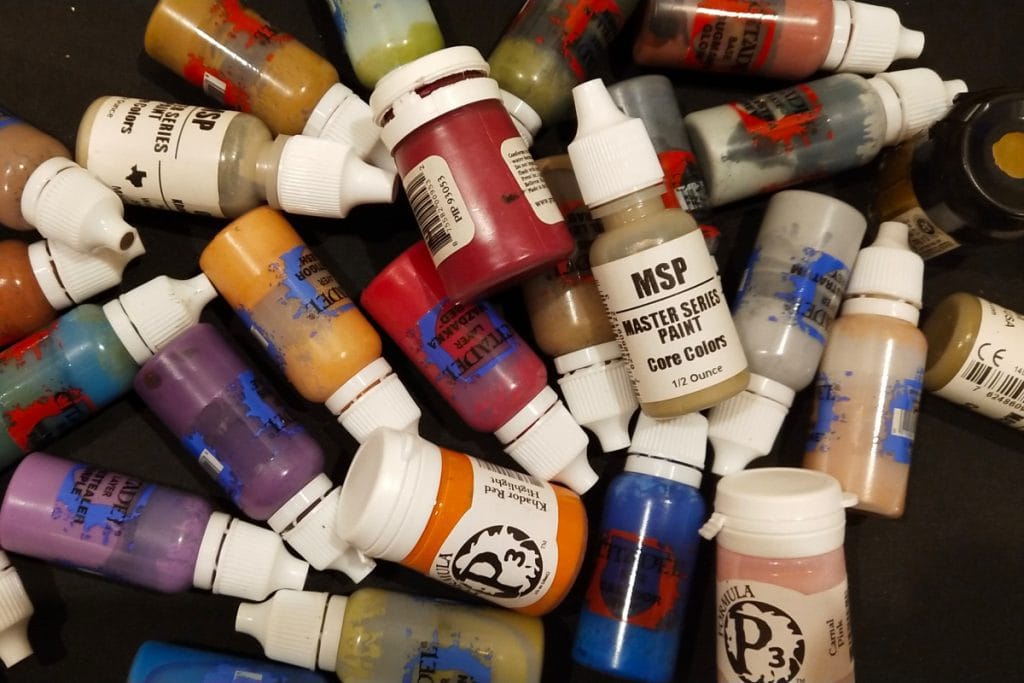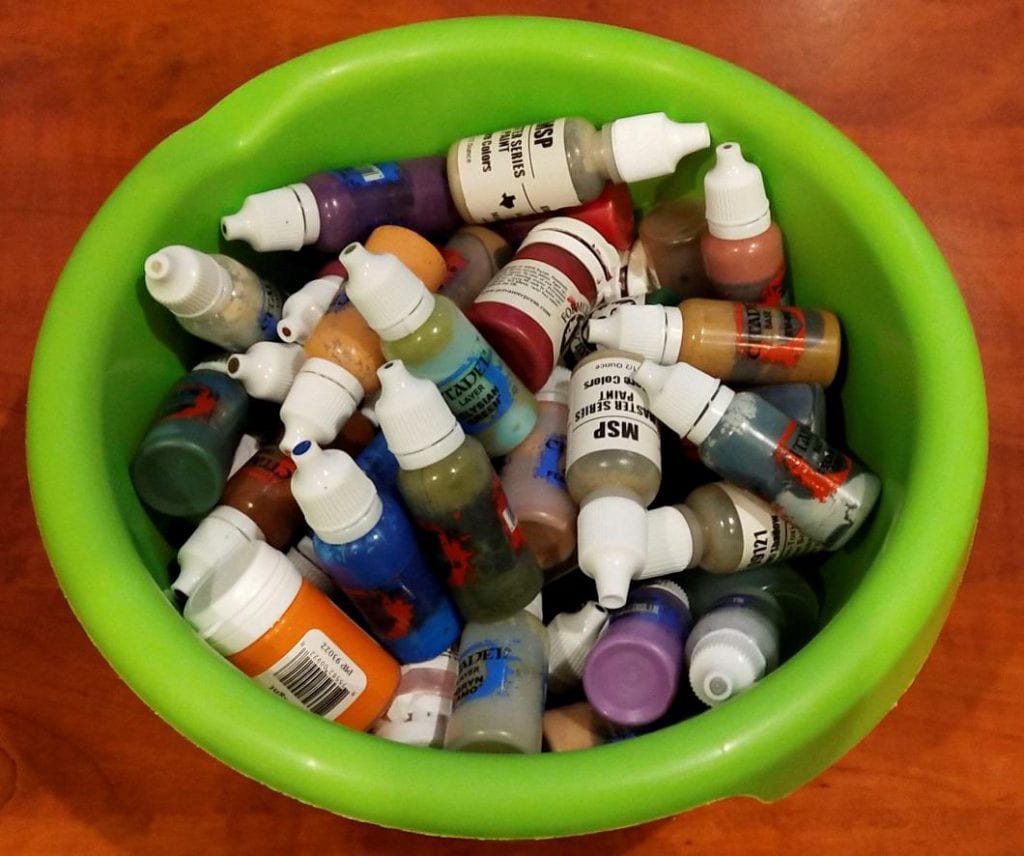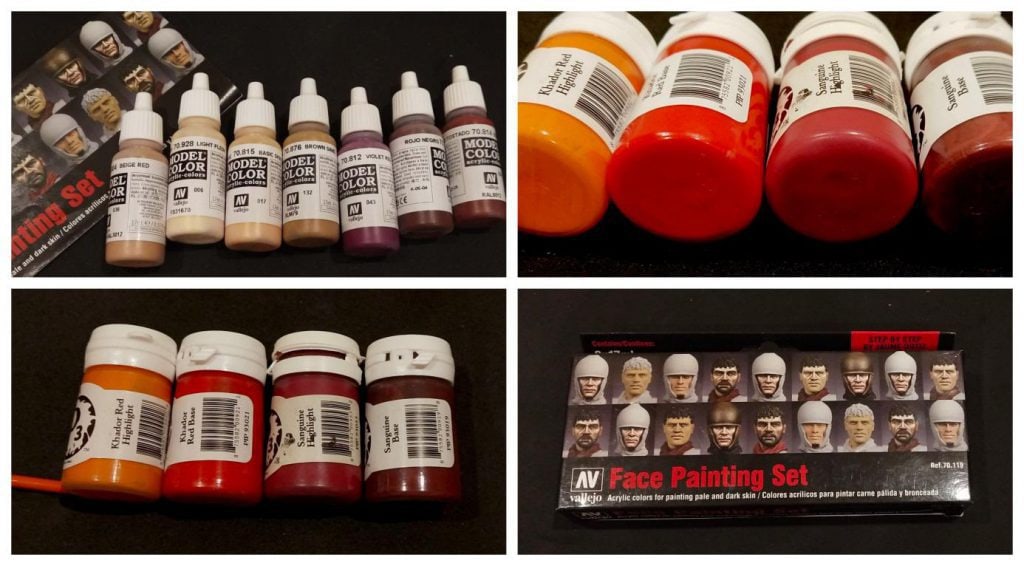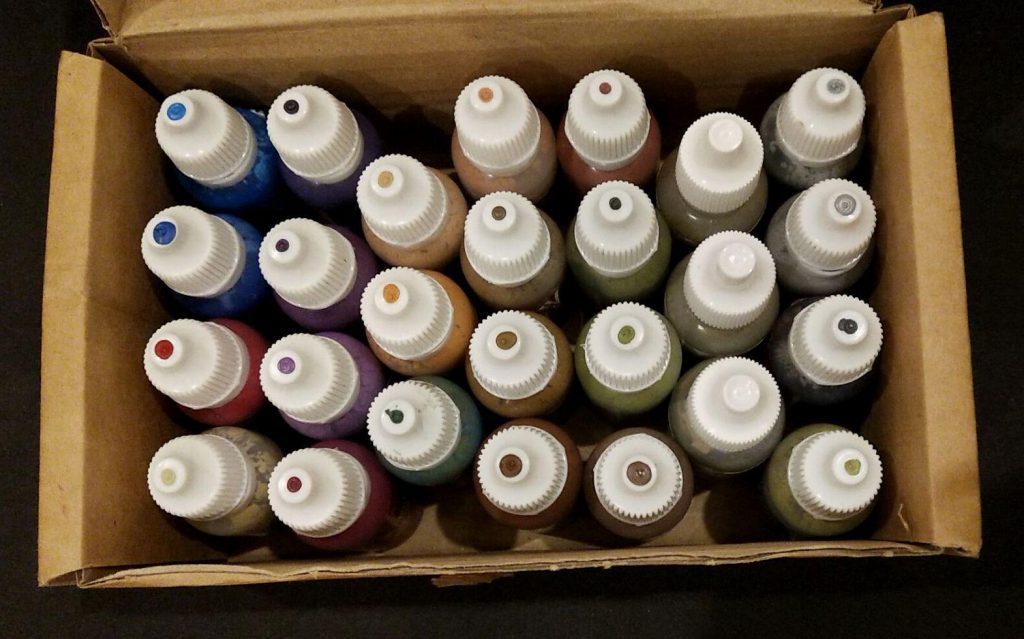
It is safe to say that almost all of us, no matter which miniature game one is collecting and/or playing, end up with tons of paints. Whole walls and desks covered with all shades imaginable. Starting from pure black and ending on mummy brown. But what if you were to use only a handful of your paints? Which one to use and why to limit yourself anyway? Let me introduce the idea of a Limited Palette in the first article in a series regarding this interesting topic.
Before explaining the idea behind a limited palette, let’s have a look at why we tend to end up with so many paints? In most cases, while painting one can use as many as 20-30 (sic!) different paints to paint only one miniature. This incredible amount of used colors is a result of using sets of paints for different parts of the figure. For example, one can use as much as 5 colors for painting just the flesh, not to mention clothes, armor, leather and all other elements of the figure. And let’s face it, using sets is simply very convenient. Instead of wasting our time to mix the shadows and highlight colors, we have all those shades and tints premixed and ready to use straight out of the bottle! No mixing, no tinkering if this is the right shade, etc. Simply speaking – no hassle, just pure joy of painting.

The easiest explanation would be that you are limiting yourself to use only a handful of paints when painting. By a handful I am thinking about around 5 to 6 paints at most, to paint the miniature. No separated sets for painting flesh, clothes, leather or any other element of the figure.
Personally, as far as I am concerned, each time you are using a predetermined number of colors for a project you are using a limited palette. The way I see it, it doesn’t matter if you are using 5/10/15 paints, you are limiting yourself to a specific number of paints.

Each artist will give you a different answer to these questions, as there are several factors to consider here:
– Your personal preference
– project you are currently working on
– number of paints you have or can use
– how much mixing you are willing to do
– how much space you can spare for your hobby
Those are only the most general and important factors and it all heavily depends on your preference and your current situation. If you travel a lot and don’t have a dedicated hobby space your limited palette paint list will probably be short. However, if you have your workbench and are mostly staying at home your paint list might be slightly longer as space is not your concern. It all depends on your needs, space capabilities and the purpose of why you are going to use a limited amount of paints.
When you have all of that figured out it is easier to choose colors for your limited palette. You will know if you want to stick to primary colors with some minimal additions or need to select a more specific and wider range of shades and tints. The complexity of your project and your experience with mixing paints will also determine the number of paints you will end up with.
Another hard question, that do not have a definitive answer. Most artists seem to start with three primary colors (red, yellow, blue), and take it from there. Then black and white follows, together with raw umber interchangeably with burnt sienna. Sometimes both (raw umber and burnt sienna) are included in the must-have list of paints for a limited palette.

The list looks as follows:
– red (primary red)
– yellow (primary yellow)
– blue (primary blue/Ultramarine blue)
– black
– white (Titanium white)
– burnt sienna
– raw umber
The above list seems to be considered as the best and most multipurpose limited palette that you can start with. Personally, I started my adventure with a limited palette with as much as 14 paints (including inks and washes), but after a while, I ended up with a very similar list of paints, like the one above. I will talk more about my approach toward the limited palette, together with some tips & tricks in another article 😉
The main advantage is the color harmony. With fewer colors on your palette and mixing those limited colors results in better harmony. It is less likely that your color scheme will look off and out of place.
Better understanding of color theory and color mixing.
As strange as it may sounds, by the necessity of doing a lot of mixing, you will get a better understanding of color theory. By mixing, with time, it will be easier for you to see the shades and tints. To determine shadows, highlights and choose color schemes. Simply speaking, you will be choosing and using colors more intuitively.
If you are traveling a lot, a limited palette is going to make your life easier.
Fewer paints mean easier packing and a smaller amount of equipment needed for paint.
Our hobby is expensive enough, and a limited palette will make it cheaper. Less money spent on paints means more money for models and your new miniature carrying case from https://shop.army-case.com/wp-content/uploads/2018/01/brush-case-1.jpg 😛
I hope that you enjoyed this short introduction to the idea of a limited palette. That it helped you to see the benefits that such a limitation might give you. Getting out of your comfort zone is scary, but is a fun way of learning new skills and techniques. I will talk a bit more about my approach toward a limited palette together with some tips and tricks in another article 🙂
Feel free to leave a comment. What you think about a limited palette? Have you already used one? If so, how was it? If no, would you give it a try?
Check the rest of our blog posts: